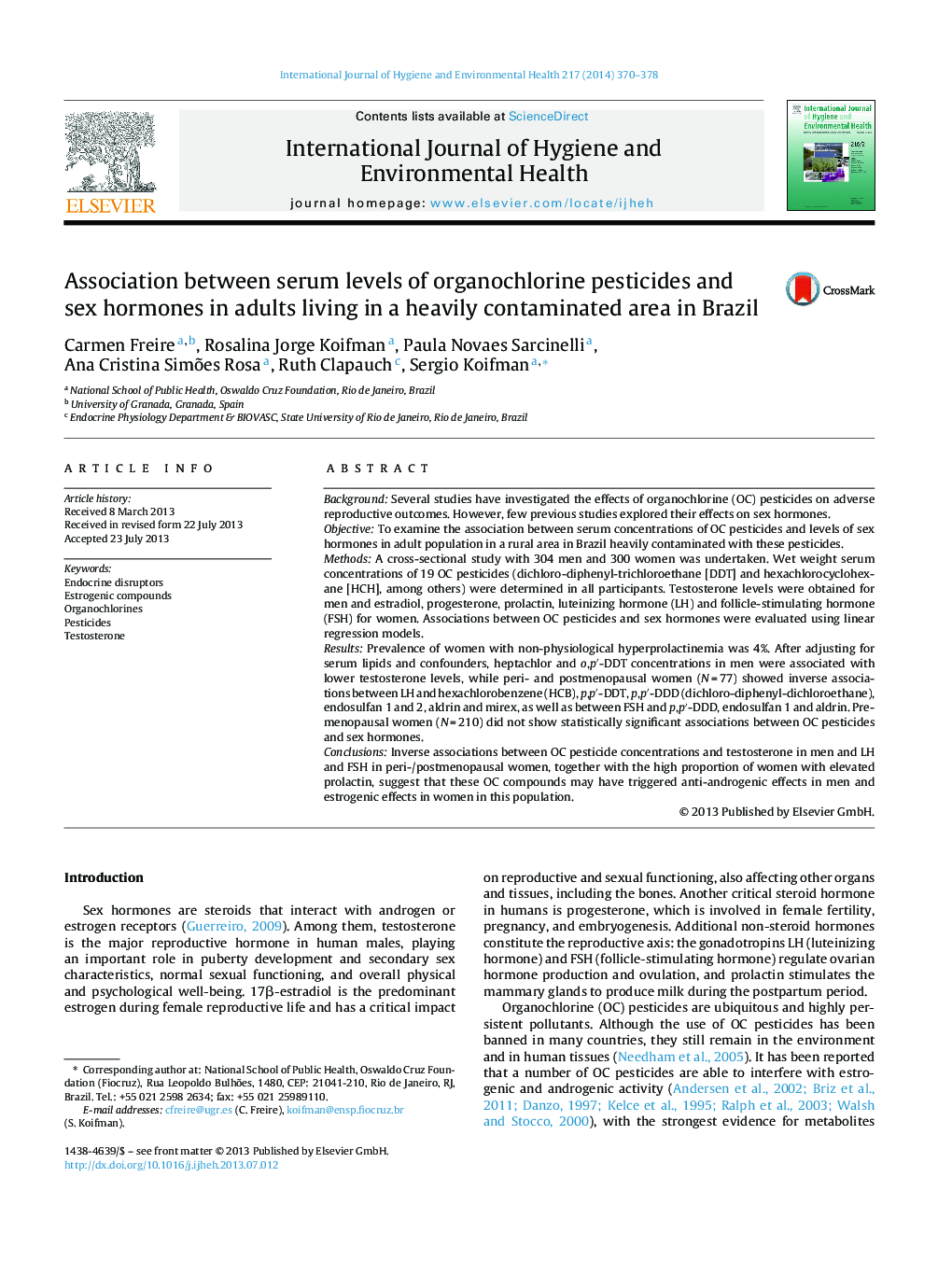| کد مقاله | کد نشریه | سال انتشار | مقاله انگلیسی | نسخه تمام متن |
|---|---|---|---|---|
| 2588654 | 1561898 | 2014 | 9 صفحه PDF | دانلود رایگان |
BackgroundSeveral studies have investigated the effects of organochlorine (OC) pesticides on adverse reproductive outcomes. However, few previous studies explored their effects on sex hormones.ObjectiveTo examine the association between serum concentrations of OC pesticides and levels of sex hormones in adult population in a rural area in Brazil heavily contaminated with these pesticides.MethodsA cross-sectional study with 304 men and 300 women was undertaken. Wet weight serum concentrations of 19 OC pesticides (dichloro-diphenyl-trichloroethane [DDT] and hexachlorocyclohexane [HCH], among others) were determined in all participants. Testosterone levels were obtained for men and estradiol, progesterone, prolactin, luteinizing hormone (LH) and follicle-stimulating hormone (FSH) for women. Associations between OC pesticides and sex hormones were evaluated using linear regression models.ResultsPrevalence of women with non-physiological hyperprolactinemia was 4%. After adjusting for serum lipids and confounders, heptachlor and o,p′-DDT concentrations in men were associated with lower testosterone levels, while peri- and postmenopausal women (N = 77) showed inverse associations between LH and hexachlorobenzene (HCB), p,p′-DDT, p,p′-DDD (dichloro-diphenyl-dichloroethane), endosulfan 1 and 2, aldrin and mirex, as well as between FSH and p,p′-DDD, endosulfan 1 and aldrin. Premenopausal women (N = 210) did not show statistically significant associations between OC pesticides and sex hormones.ConclusionsInverse associations between OC pesticide concentrations and testosterone in men and LH and FSH in peri-/postmenopausal women, together with the high proportion of women with elevated prolactin, suggest that these OC compounds may have triggered anti-androgenic effects in men and estrogenic effects in women in this population.
Journal: International Journal of Hygiene and Environmental Health - Volume 217, Issues 2–3, March 2014, Pages 370–378
